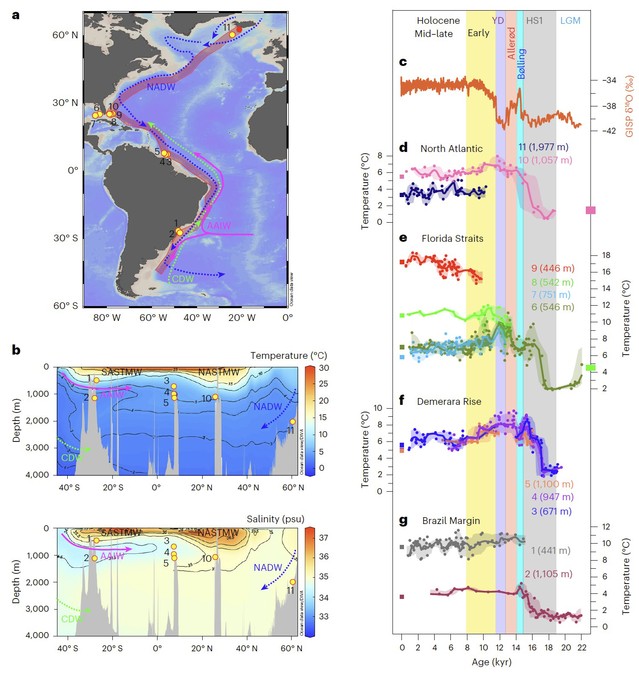WanyiLu1,2, Delia W. Oppo2, Zhengyu Liu3, Chenyu Zhu4, Alan Condron2, Jean Lynch-Stieglitz5, Weifu Guo2, Anya V. Hess2&Shouyi Wang2,6
1State Key Laboratory of Marine Geology, Tongji University, Shanghai, China.
2Woods Hole Oceanographic institution, Woods Hole, MA, USA.
3Atmospheric Science Program, Department of Geography, Ohio State University, Columbus, OH, USA.
4Institute of Atmospheric Physics, Chinese Academy of Sciences, Beijng, China.
5School of Earth and Atmospheric Sciences, Georgia institute of Technology, Atlanta, GA, USA.
6MIT-WHOl JointProgram in Oceanography/Applied Ocean Sciences & Engineering, Woods Hole, MA, USA.
Abstract:Model simulations project that the Atlantic Meridional Overturning Circulation (AMOC) will weaken in response to global warming, but with large uncertainty. The past 20 kyr are a prime target for model validation, as boundary conditions are reasonably well known, and the AMOC and climate experienced dramatic changes during this period. Here we present eight subsurface Atlantic temperature reconstructions based on benthic foraminiferal magnesium-to-lithium ratios, and compare the timing and amplitude of reconstructed changes with those in two coupled climate model simulations. We show that compared with the last glaciation and the past 8 kyr, the shallow (~500–1,100 m water depth) tropical North Atlantic was anomalously warm during most of the last deglaciation and early Holocene, which the models suggest is due to a relatively weak AMOC that reduced advection and allowed heat to accumulate. Our temperature reconstructions imply that the AMOC strengthened ~14.7 kyr ago and during the early Holocene (from ~12 to 8 kyr ago), suggesting that enhanced northward heat transport contributed to Northern Hemisphere warming and deglacial melting at these times. The transient model simulations predict features of temperature reconstruction with varying success, possibly because deglacial and Holocene AMOC strength are poorly constrained, and not accurately simulated.
Full Article:https://www.nature.com/articles/s41561-025-01751-y



